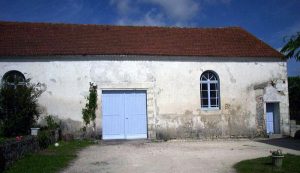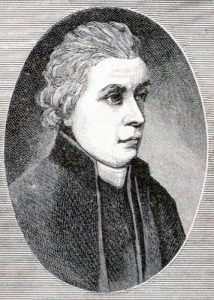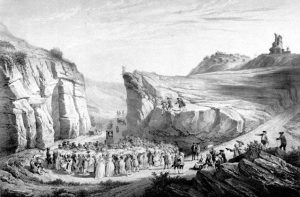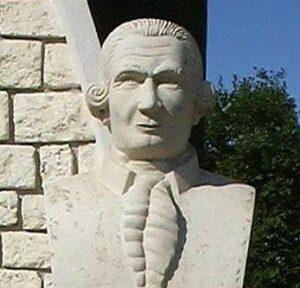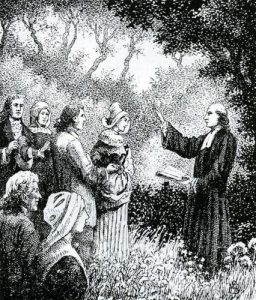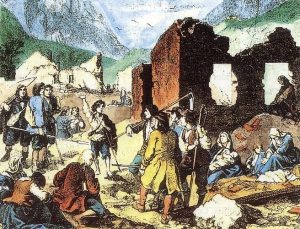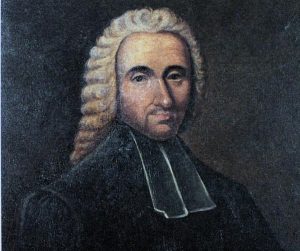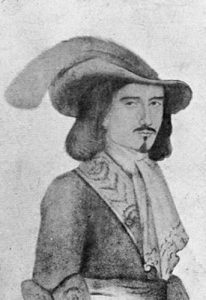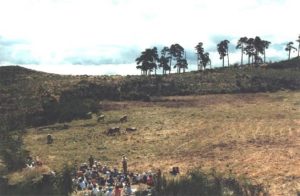Jean-Louis Gibert (1722-1773), "Church of the Desert" pastor
Born in the Cevennes, in the village of Saint-Martin-de-Boubaux (Lozère), Jean-Louis Gibert was baptised a Catholic as the law required, but his parents brought him up in the Protestant faith. At 20 he was an ordinand, that is, a candidate for the ministry, in the “underground” church. In 1744 he became secretary to the “underground” synod in the Cevennes. In 1746 he got permission from the synod to train at the Lausanne Seminary, where he remained for three years. He returned to the Cevennes in 1750 and, at risk of his life, became pastor in the “Church of the Desert”. In 1751 he asked to go and minister in Poitou and Saintonge for a year. He stayed for thirteen years. He became involved in reorganising the church in Saintonge, Agenais, Perigord and Bordeaux, continually moving about. Despite being condemned to death in absentia, he encouraged and reassured communities perpetually worried by the risk of persecution.
Houses of Prayer
Jean-Louis Gibert was a passionate man with a rare sense of conviction. He managed to persuade the Protestants of Saintonge, despite it being illegal, to finance and build many places of worship, “the Houses of Prayer“. These were simple constructions, like barns, without any external indication that they were religious buildings. Jean-Louis Gibert persuaded the governor of the province, the Marechal of Sennecterre, that they would also benefit him as he would be better able to monitor the Protestant communities. First he organised the Protestants into “groups” that met in specific houses. There was little reaction to this from the authorities. Drawing on the prophet Daniel, who announced the end of their 70 years ordeal to the Jews in Babylon, he felt that freedom for French Protestants had arrived – they could rebuild their places of worship just as the Jews, returning from exile, rebuilt the Temple in Jerusalem. The first “House of Prayer” was built at Breuillet, on the Arvert peninsula, in 1756 and the second, at Mornac, shortly after. They were not destroyed, which encouraged the building of more. Those at Avallon (commune of Avert) and Maine Geoffroy (north of Royan) were restored and altered in the XIXth century and can still be seen today.
America
When the expected freedom of worship did not come, Jean-Louis Gibert considered emigrating to North America with his flock. In 1761 he went to London with the Archbishop of Canterbury so the latter could press the case for freedom of worship and of conscience in France. At the time of the peace treaty ending the Seven Years War with France, the English king did not make the case for French Protestants, but he did ensure a better welcome for them in the American Colonies. The faithful of Saintonge did not go. The conference of Saintonge did not approve of the idea. However, Jean-Louis Gibert left for Switzerland, England and then America, with a group of emigrants. Before he left, he married a young emigrant, Jeanne Boutiton, sister of a pastor. In South Carolina this group founded a colony called New Bordeaux and took up growing vines, and mulberry trees for making silk.
Jean-Louis Gibert did not exercise his ministry for long in New Bordeaux as he died suddenly in 1773 at the age of 51. Today there are many of his descendents in South Carolina. His memory is kept alive and his tomb faithfully cared for.
Etienne Gibert (1736-1817)
His parents intended him for the law, but Etienne Gibert followed his brother Jean-Louis in preparing for the ministry, and joined him in Saintonge. Then he went to study at the Lausanne Seminary. He was ordained pastor in 1758 and was sent to Saintonge, then to Bordeaux to assist a sick pastor. The man died the following year, and Etienne remained pastor in Bordeaux until 1770.
There was a small community of “Moravian brothers” in Bordeaux with whom Etienne was in sympathy. His preaching was focused on the topics of the Moravian Revival : conversion of the heart and the workings of the Holy Spirit. Part of his congregation was outraged by this “new doctrine”. The Bordeaux consistory renounced him. On appeal, the synod allowed him to continue his ministry but in another parish – in Saintonge. Deeply hurt, Etienne Gibert went into exile.
The Refuge
He went to London where he was well received in francophone parishes. In 1771 he was ordained in the Anglican church and appointed pastor of the French church in La Patente (Spitalfields) and then of the Chapel Royal at St James. In 1785 he accompanied the British Ambassador to Paris as his secretary. Former pastor of the “Church of the Desert”, who had been condemned to the galleys in absentia, he appeared at the Court of Versailles dressed as a clergyman ! He was still in Paris during the preparation of the Edict of Tolerance, signed in 1787. Then he returned to his pastoral position in London. In 1793 the governor of Guernsey offered him the job of pastor at the Cathedral, but he preferred the much smaller parish of Saint Andrews, where he served until 1815. He died in 1817, aged 80.
Literary works
Etienne Gibert was well educated and had a wide knowledge of the Bible, which he had studied in the original languages.
Out of France (the “Refuge”), he could engage in study and literary activities. In his first work, Observations on the writings of M de Voltaire (Observations sur les écrits de M. de Voltaire) ; 1788, he challenged the deistic beliefs of Voltaire.
His other works were apologetics or scriptural :
- Reflections on Revelation (Réflexions sur l'Apocalypse), 1796 ;
- Proof of the Authenticity and Divinity of the Books of the New Testament (Démonstration de l’Authenticité et de la Divinité des livres du Nouveau Testament), 1799 ;
- The Complete Story of Jesus Christ (Histoire suivie et complète de Jésus-Christ), 1801 ;
- Three volumes of sermons (Trois volumes de sermons), 1804 and 1806.

